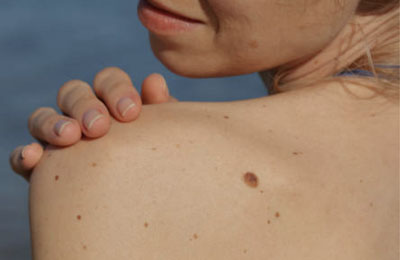Good and Bad news for patients with lots of moles

A recent study confirms that patients with lots of moles (more than 50) and patients with dysplastic (atypical) moles are at higher risk for melanoma and develop their melanomas at a younger age. However the good news is that these same patients seem to have their melanomas diagnosed earlier and at a less aggressive stage than patients with fewer moles. This is at least partly due to more careful and regular skin cancer surveillance in the “high risk” group. One important lesson from this study is everyone needs to regularly check their moles. Higher risk patients (those with lots of moles and atypical moles) because they are more likely to develop melanoma, and lower risk patients (those with fewer and more typical moles) to avoid latter diagnosis of the melanomas they do develop.
Citation:
Association of Clinicopathological Features of Melanoma With Total Naevus Count and a History of Dysplastic Naevi: A Cross-Sectional Retrospective Study Within an Academic Centre
Clin Exp Dermatol 2018 Jul 01;43(5)566-572, SY Tan, LC Strazzulla, X Li, JJ Park, SJ Lee, CC Kim
More on Melanoma
